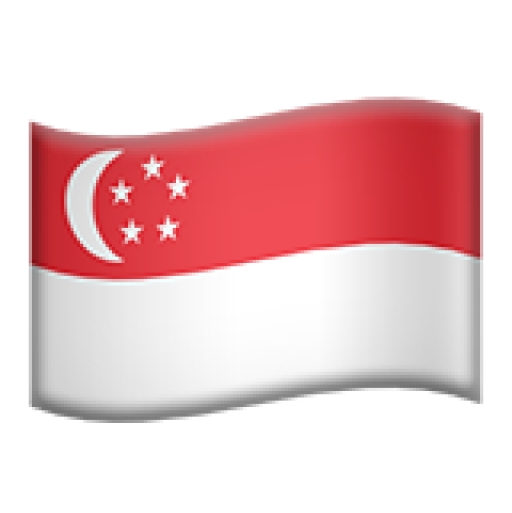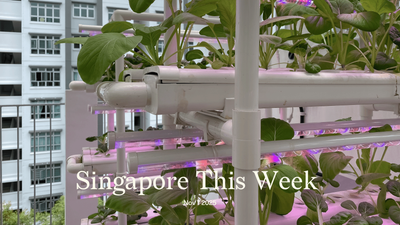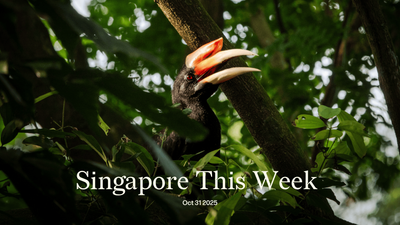International: Larry the great regionalist?
What is South-east Asia? For long it was an idea and a place given meaning only from the outside. Suvarṇabhūmi, land of gold, for ancient Indians; Nanyang, southern seas, for Chinese; and South-Eastern Asia for Howard Malcolm, a Bostonian reverend, in his 1839 travel memoir. They all meant different things. “Some names, like ‘rose’, acknowledge what exists. Others, like ‘unicorn’, create what otherwise would not exist. In between lie names that simultaneously describe and invent reality. ‘Southeast Asia’ is one of those,” wrote Don Emmerson, Stanford South-east Asianist. Perhaps the ontological debate about the region is an essential component of its definition. To be South-east Asian is to constantly ask who we are, to embrace the fluidity, not rigidity, of human identities.
Yet, a world of realpolitik between territorial nation-states has little time for these musings. The second world war and its aftermath hardened boundaries and borders: from the Allied forces’ South East Asia Command in 1943 to the formation of ASEAN in 1967. If colonial and Cold War conflict is what spirited South-east Asians into being, at least in our political costumes, then the 21st century’s primary geopolitical contest threatens to divide us. Beijing or DC? Trump’s tariffs and attendant ignorance—this week he suggested that Vietnam should buy more American SUVs—are just the headline concerns about a broader US retreat from the world.
Already over three-quarters of the world’s countries have a more positive view of China than of the US. Within South-east Asia, a majority of people surveyed say ASEAN should align with China over the US, if forced to pick. Singaporeans surveyed also believe that China has a more positive influence on Asia than does the US. The governments of Cambodia and Laos are already firmly in China’s orbit, while the Philippines is a US treaty ally and Singapore is a military partner that wants non-alignment. Will foreign interests try and cleave ASEAN apart?
Not if the guitar hero can help it. Lawrence Wong, prime minister, this week released “Why ASEAN matters”, a video calling for greater regional integration, something the ruling People’s Action Party (PAP) believes will be a bulwark amidst geopolitical uncertainty. Wong has now completed visits to all ASEAN capitals, Myanmar aside. (He hopes to, he said with characteristic understatement, when “the situation is more conducive”.) Singapore has long had a complicated relationship with our neighbours: facilitating economic development and assisting with some humanitarian efforts, but also turning away refugees and ignoring the regional environmental impact of our own development. Ordinary Singaporeans, imbued by past leaders with a superiority complex, have often ignored our neighbours or treated them transactionally. But many in our younger generation have been seeking to engage more genuinely with them. (Prompted partly by the search for more affordable pastures.) Wong urged “all Singaporeans” to learn about the region, understand our neighbours, and build connections. It’s an important project not only in our quest to grasp that nebulous South-east Asian identity; but the nebulous Singaporean one too.
Some further reading: In “Living with Tumasik and Temasek: meditations on our ‘national’ history”, we explore Singapore’s historical and contemporary connections to its region, and question the notion of a national history.
Politics: Life after ‘Doc’
The PAP’s thumping success at the 2025 general election (GE) left opposition parties reeling. While the Workers’ Party (WP) licked its wounds and perhaps felt gratified for simply having maintained its overall footing, the future seemed unclear for the Singapore Democratic Party (SDP) and the Progress Singapore Party (PSP). Notwithstanding the blatant gerrymandering, the PSP, which came within a whisker of winning the old West Coast GRC at GE2020, was shocked at getting just 40 percent of the vote at the new West Coast-Jurong West GRC at GE2025. For founder and team lead Tan Cheng Bock, who used to regularly record some of the PAP’s highest vote shares when he was its backbencher, it was a galling way to bow out. The party’s image and prospects have always been closely tied to the octogenarian Tan’s. Walid Abdullah, NTU professor, argued on Jom’s election night show that his team’s loss might spell its end.
Not so fast. This week, the party announced sweeping leadership changes aimed at youthful renewal. Tan and Hazel Poa, who served as a non-constituency MP in the last Parliament, have stepped down from its central executive committee (CEC). So has treasurer S Nallakaruppan. The new CEC members are Sani Ismail, Lawrence Pek and Stephanie Tan, who all contested this past election. Tan, who represented the PSP at the election roundtable debate, this week appeared on a podcast by The Straits Times (ST). “We might seem to have been a bit slow in coming up with a response right after the GE, but that’s because we were hard hit, to be honest, and we took time [to] come up with a new plan to see how we can steer this ship forward,” Tan said. The PSP intends to raise the profile of its younger members, hold outreach events targeting specific demographics—for instance visits to nursing homes—and possibly start its own podcast.
But it may actually get lots of airtime help from the mainstream media (MSM). In the past, between elections, the MSM tended to ignore opposition parties without seats in Parliament. It’s interesting that ST has now rushed to give Tan and PSP such a visible platform. The PAP will be happy. It’s in its interest to keep the opposition field alive and crowded, so that the WP faces greater competition for non-ruling-party “resources”, including talent. The likes of Tan and the SDP’s Ariffin Sha might easily drift towards the WP if their parties were flagging. Singaporeans should thus expect the MSM to offer more balanced coverage of more opposition parties. Something to cheer?
Society: Sorry, no change
Spending money can be a tricky business. Remember the time the cashier refused to accept legal tender because the banknote had scribbles on it, or a small tear held together with adhesive tape? Or the time you were unable to make a purchase because, “Sorry, we don’t accept cash. You didn’t see our sign, meh?” Or, that one other time you were too lazy to go to the ATM since everywhere is cashless these days, right? Well, sort of: “Sorry horrr, our machine is down. Can pay by cash?”
The government launched the National Campaign to Minimise Cash Transactions in 1985, estimating that it would save the state S$24.5m in labour costs. In 2021, a Visa study found that the Covid-19 pandemic had accelerated Singapore’s cashless push by at least four years, with less than one in five consumers here preferring to use cash. The city-state is today a digital payment leader in South-east Asia, with the highest rate of adoption in the region. But while the benefits of cash-free economies are well-proven, the drawbacks of digitalisation persist. The push to go cashless, particularly in less-developed societies with digital divides, risks worsening financial exclusion and existing inequalities, further marginalising the already-vulnerable. Those left behind include low-income groups, women, digital laggards, rural communities; as well as the unbanked, underbanked and elderly. Fresh fears over national security threats and Russian hybrid attacks have sent even the poster children of cashlessness, Norway and Sweden, backpedalling on plans to go fully digital. Here, online payments and transactions have “opened a new world of possibilities and can of worms too,” Kelvin Tan, a senior lecturer at the Singapore University of Social Sciences, told CNA. Last year, Singaporeans lost a record S$1.1bn to scams. Cryptocurrency scams accounted for almost 25 percent of the losses.
With the right safeguards, digitalisation can boost financial inclusion and bridge the technological chasm, as developing economies like India and Kenya have shown. But perhaps payment binaries need not be a foregone conclusion. As a cautionary tale, Sweden has realised not too late that even though “efficiency has been the priority for payments, safety and accessibility ‘are at least as important’.” That’s a future to buy into. One that’s more inclusive and better prepared for the unexpected. Where cash isn’t necessarily king, but remains an occasional necessity.
Society: Preying on predators
Two teenage boys posed as underage individuals on dating sites and Telegram hook-up groups to lure “paedophiles” and extort money from them. In one incident, the duo duped a 24-year-old man on Grindr, who agreed to meet them at a void deck in Bukit Batok. They recorded the encounter and threatened to alert the police about the man’s paedophilic intentions unless he paid them a sum of $2,000. The man complied; they deleted the video. But the police later caught them (the prosecutor didn’t say how).
Exploiting the dangers of online grooming for profit is malicious. Still, this case is somewhat in keeping with the rise of such vigilante justice globally. Notably, SOSA (Safe from Online Sex Abuse) is a non-profit organisation that tackles online child sex abuse and trafficking through undercover operations with law enforcement. They share their methods in “SOSA Undercover”, a YouTube series. Ariel Winter, the actress who played Alex Dunphy in the sitcom “Modern Family”, volunteers for SOSA as an undercover decoy. While the existence of these organisations has helped to convict many online perpetrators, they are a reminder of how dangerous the internet can be.
Grooming is an act of building up trust and emotional connection with a minor, typically with the intention of sexual exploitation, gratification or abuse. Dating apps are not the only platform of concern. Grooming can occur on various online sites including Roblox, a gaming platform with over 85m active users, about 40 percent of whom are preteens. Reported cases of grooming and sexual predators are believed to be due to its poor moderation system. What can we do to better protect our children? First, it’s important not to blame victims but to keep the focus on offenders. A study has found that lessons on online grooming, even for under an hour, can help prevent online sexual abuse amongst adolescents. Perhaps it’s also time for us to reevaluate Singapore’s sexuality education curriculum in schools, particularly how consent and age-appropriate relationships are being discussed.
History Weekly by Faris Joraimi
One of nine historic pavilion wards marked for demolition at Tan Tock Seng Hospital (TTSH) will be “retained”. Without conservation status, it’s unclear whether it will be spared the wrecking ball in the long run. These pavilion wards, nicknamed “Nightingale Wards” after the British reformer and nurse Florence Nightingale (1820-1910), were first built between 1907 and 1931. They’re not just part of a Singaporean story of innovative public health, but a global history of care infrastructure for the sick and dying. Hospitals in 19th-century Britain—then already the world’s wealthiest and most powerful country—were overcrowded places with high patient mortality rates. They were designed to keep out “miasma,” or bad air, believed to transmit diseases. Nightingale thought that hospitals need windows. In her 1863 treatise, based on her experience organising military hospitals during the Crimean War, she also wrote, “The first principle of hospital construction is to divide the sick among separate pavilions.” London’s St Thomas’ Hospital was the first to adopt this principle in 1871.
By 1909, the “pavilion principle” was brought to the colonies with local adaptations. That year, Tan Tock Seng Hospital was relocated from the low swampy grounds of Balestier Plain—not the best place for treating beri-beri—to its current location between Moulmein Road and Balestier Road. The pavilion wards were built on a hilltop, recalling traditional Malay house architecture with their large roof eaves, ventilated roof joints and high ceilings that maximised shade and airflow. Well-spaced beds helped reduce infection and encourage recovery. A long central aisle facilitated better patient supervision. Death rates for tuberculosis and dysentery—common maladies in sweltering, congested port-cities—declined as a result. Despite these miraculous advances, and the overall more dignified conditions of these wards, they weren’t beds of roses. Acute and long-term recovery remained a difficult process for all caregivers, whether patients’ loved ones or nurses. Suling Lin, columnist for The Straits Times, recalled the sobering sight of elderly patients in these very wards undergoing pain and discomfort. Our state-of-the-art wards today strain under shortages in hospital beds and nursing staff. The Nightingale Wards of TTSH are part of an unresolved equation about the form and priorities of care systems, balancing efficiency, affordability, comfort and ethics. Is today’s best possible configuration always a day late?
Arts: The boutique butchery at the meat market
The Edinburgh Festival Fringe has a reputation for being a bit of a meat market. Millions of people descend on the Scottish capital for the thousands of shows not only on its stages, but also in its bars, churches, toilets—or really anywhere you might be able to squeeze more than one body into. Several summers ago, mounds of trash clogged the city’s usually picturesque pavements; bin workers had gone on strike for better wages, refusing to take out the garbage even as their city continued to take in visitors. That same year, UK comedians started to spurn the Fringe as talk emerged of exploitative labour practices and extractive accommodation costs. “Performers are doing it out of love...and maybe a deluded notion that this will be their big break,” one comic told The Guardian. “It feels like a machine designed to suck money and spirit from creative people.” The Fringe is uncurated, meaning that anyone who wants to be part of it, can; this also means that hidden gems—who frequently fork out significant funds to get there—can often get lost in the chaff.
A small group of Singaporean producers and artists have decided to change that by muscling their way into the fray. Think of their inaugural Singapore Spotlight platform as a tiny gourmet butchery, a boutique in the bazaar. Lim Shien Hian, the platform’s lead producer, said in a press statement: “[The Fringe] sounds fantastic and wonderful to tour, but it’s also daunting, challenging, and financially risky...Singaporeans might find it easier and safer to produce work locally.” So while Singaporeans have been at the Fringe for years, this marks the first concerted effort to coordinate appearances. It’s a ground-up initiative to make Singapore shows more sustainable when they take to the global stage, to share resources and publicity efforts. The Spotlight team has put together a series of networking events—including a “Singapore Night” party and a closed-door industry tea—around a spine of six genre-hopping acts, from theatre to comedy to the circus. Street performer Jonathan Goh combines comedy and circus artistry in his “Planks & Ladders Show”, which features a free-standing ladder and lots of flirting with the crowd. And artist-composer-musician Hee Suhui’s experimental “Ill Behaviour” is both a spiky and sensual ode to the viscera of our vulnerable bodies, featuring the charismatic stage presence of XUE, founder of the Singapore Butoh Collective. The Fringe may aspire “to give anyone a stage and everyone a seat”. The Singapore Spotlight desires a seat at the table.
Tech: Riders, rights, and representation
Foreign labour tensions have hit the gig economy. On July 7th, around 20 delivery riders convened with Workers’ Party leader Pritam Singh at Bedok Reservoir to voice their concerns over the gig economy’s evolving landscape. These included the outsourcing of delivery jobs to contractors employing foreign workers, potentially hurting local riders’ earnings; and the opaque algorithms governing job assignments on delivery platforms.
Only citizens and permanent residents are allowed to work as delivery riders. But from as far back as 2023, CNA had exposed user accounts up for rent or sale online. This week CNA interviewed many riders, revealing varying levels of frustration, outrage, helplessness and resignation. Foreigners hiding their faces; foreigners using Malaysia-registered motorbikes; foreigners offering illegal hitch services via Telegram. These were some of the issues raised. Walter Theseira, an economist at the Singapore University of Social Sciences, told CNA that the expansion of labour supply could crimp work availability and earnings for locals. He also mentioned risks with this unregulated market: personal data theft; and problems for delivery recipients if they need to accurately trace the identity of the delivery rider. To address the problem, platforms have tried to enforce facial recognition and other identity checks.
These issues have arisen just months after the implementation of Singapore’s Platform Workers Act on January 1st 2025, which introduced enhanced protections for gig workers. The Act mandates CPF contributions from platform operators, provides work injury compensation, and establishes a legal framework for worker representation. While these measures aim to bolster financial security and representation for platform workers, concerns persist about their impact on take-home pay and the potential for increased costs being passed on to consumers. To address issues like illegal delivery work by foreigners, the government has formed a trilateral work group, including the Ministry of Manpower, Ministry of Transport, Grab, and the National Trades Union Congress. Singh emphasised that he would consider various perspectives before weighing in on the matter.
These grumblings also allude to larger questions about the balance between locals and foreigners in our workforces. How do we decide which sectors to open up to migrant workers? Is it only a matter of time before the delivery rider job is performed by foreigners? Perhaps the more imminent threat is automation. Food delivery robots in China and driverless ride-hailing services in the US are just two of the many autonomous vehicle models already in use. When their adoption in tech-obsessed Singapore rises, it’s unlikely that our riders will get much sympathy from the media or politicians.
Tech: Manus AI relocates to Singapore amid US chip curbs
Can AI turn your thoughts into action? This is the promise of Manus AI, the flagship product from Chinese AI startup Butterfly Effect. (Manus comes from the Latin Mens et Manus, Mind and Hand.) AI whizzes have been swooning over it. Said MIT Tech Review: “Manus claims to be the world’s first general AI agent, using multiple AI models (such as Anthropic’s Claude 3.5 Sonnet and fine-tuned versions of Alibaba’s open-source Qwen) and various independently operating agents to act autonomously on a wide range of tasks. (This makes it different from AI chatbots, including DeepSeek, which are based on a single large language model family and are primarily designed for conversational interactions.)” The publication assigned Manus AI a series of tasks: compile a list of notable reporters covering China tech; search for two-bedroom property listings in New York City; and nominate potential candidates for Innovators Under 35, its own annual ranking. MIT Tech Review concluded that despite some system crashes and a server overload, “it’s highly intuitive and shows real promise for the future of AI helpers.”
And now it’s Singaporean. The move here, announced at the SuperAI conference in June, positions Singapore as Manus AI’s global headquarters, with additional offices in Tokyo and California. It was surely prompted by the challenges it faces accessing Nvidia’s high-end chips due to US export controls. Singapore’s strategic location and tech-friendly environment have attracted other Chinese-linked firms, like Shein and TikTok, seeking to mitigate geopolitical risks. Manus AI’s move aligns with this trend, potentially facilitating access to US clients and funding.
Meanwhile, the US Treasury is reviewing a US$75m (S$96m) investment in Manus AI by California-based venture capital firm Benchmark, assessing compliance with new regulations on foreign investments in sensitive technologies. Clearly, the US does not want significant amounts of capital going into the development of AI that will propel Chinese development further than their American counterparts. Manus AI has started recruiting in Singapore, offering positions with salaries ranging from US$8,000 (S$10,240) to US$18,000 (S$23,050). Some Singaporean techies will rejoice amidst the numerous layoffs in the sector. However, the platform’s monthly active users have reportedly dropped from 20m in March to around 10m in May, amid competition from rivals like ByteDance’s Coze Space and Baidu’s AgentBuilder. Singapore will be delighted if they keep fighting it out here.
Faris Joraimi, Sakinah Safiee, Corrie Tan, Tsen-Waye Tay and Sudhir Vadaketh wrote this week’s edition. Additional contributions by Liyana Batrisyia and Abhishek Mehrotra.
If you enjoy Jom’s work, do get a paid subscription today to support independent journalism in Singapore.








